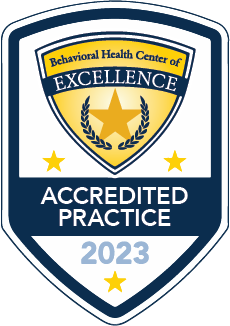The Positive Effects of ABA Therapy for Children with Autism

You’ve received an autism diagnosis for your child and now you’re going down a rabbit hole of unknowns. ‘What will their life look like? Will they be able to go to school? Will they learn to speak? What can I do to help them?’ It can be overwhelming, but you’ve already taken the first step to ensure your child has the best life possible- looking for help!
Early intervention plays a significant role in shaping the path of a child after receiving an autism diagnosis. We learn and grow so much in the first five years of our lives, and research has shown that this is when we are at our most impressionable. By empowering children and families with daily living skills, confidence, and tools, we set them up for success – one adventure at a time.
“Good intervention partnered with the time to grow and develop makes a huge difference for children with autism. What they see in their child today, may look very different tomorrow!“ Dr. Jaqui Otto, Licensed Psychologist at InBloom
Early intervention programs like Applied Behavior Analysis (ABA) Therapy are often recommended by physicians and neurologists for young children diagnosed with autism spectrum disorder (ASD.) The goal of ABA Therapy is to improve the quality of life for children through long-term positive effects. While the destination is the same for most families – a child successfully graduating from an ABA Therapy program – the journey will vary based on the child’s individual needs.
That’s the beauty of ABA Therapy, a Board Certified Behavior Analyst (BCBA) will identify and prioritize socially significant behavior goals in collaboration with the child’s caregivers to create a therapy plan solely for them. In an effective and successful center-based ABA Therapy program, the child reaches the necessary developmental milestones through therapy and can generalize and use the skills they’ve learned in everyday life.
What are the Positive Effects of ABA Therapy for Children with Autism?
Here are a few examples!
1. Helps Children Gain Independence
A big part of independence for children is being able to complete certain daily living skills on their own. Things like using the potty, feeding themselves, and dressing themselves can sometimes be challenging for children with autism. The individualized nature of ABA Therapy allows children to learn these skills in ways they understand and at their own pace. While washing your hands may seem like a simple process, it involves a complex set of skills that are built into a sequence of events.
With ABA Therapy, those skills are broken down into smaller tasks (also known as Task Analysis) allowing the child to practice and become comfortable with a small skill and over time connect the skills into the sequence to complete the task! Task analysis can be presented in picture form, written form, or a combination to help the child complete a variety of daily living skills. Here’s an example of a Short Task Analysis being used at one of our Learning Centers:

2. Prepares Children for Elementary School
Parents of children with autism express a variety of concerns–especially about social interaction. It’s quite common to hear parents say that their child has either no interest in their same-age peers or expresses interest but is unable to initiate or maintain interactions. ABA Therapy in center-based settings can help children improve their peer interactions in school by teaching skills like eye contact, parallel play, tolerating sharing, and taking turns.
Once these initial skills are taught, children can then learn things like sharing, following directions, initiating greetings, and engaging in cooperative play! Before any teaching begins, the child’s clinical team will assess their current social skills to measure progress toward the desired goal.
That’s what ABA Therapy is all about after all: Progress through data – and of course, some fun along the way always helps!
Peer interactions will vary significantly based on the child, so the goals need to be dependent on the child’s individual needs and capabilities. The objective is to help the child become more comfortable with and confident in interacting with others to be prepared for a transition into a traditional school environment.

At InBloom Autism Services, we specialize in early intervention ABA Therapy, which means our centers and curriculum were created specifically for young children with autism. Tour an InBloom Learning Center near you!
3. Encourages Communication and Individuality
Behavior is a form of communication. Some children will flap their hands when excited, rock and forth, or even spring around really fast! ABA Therapy does not stop children from expressing themselves in the way they prefer. The goal of therapy is to help children effectively communicate their needs and express their emotions to those around them.
For non-verbal children, there are different augmentative alternative communication systems like PECS (Picture Exchange Communication System) boards or tablets that can be used to communicate. ABA Therapy can help teach children how to communicate their needs using those devices or with traditional speech over time.

However, some behaviors can be harmful to the child or those around them. These are considered “problem behaviors.” When addressing problem behaviors in ABA Therapy, it is important to understand why these behaviors are occurring (learn more about Functions of Behavior) to address them. By teaching children alternative behaviors and methods of communicating, it helps reduce undesired behaviors, so that their needs are still met, but in a more appropriate manner.
4. Provides Ongoing Caregiver Support
Many families feel isolated when their child receives an autism diagnosis. That’s why finding a team of certified behavior therapists and analysts who have experience working with children on the autism spectrum is so important. ABA Therapy is a science that involves lots of data, collaboration, and consistency.
Children make more progress towards their goals when parents and caregivers are involved in their therapy and implement the therapy at home. Also, collaborating frequently with the child’s BCBA (Board Certified Behavior Analyst) allows for an open line of communication between families and therapists to make changes and improve therapy programs in real time to help the child thrive!
Take the Next Step!
These are just a few of the positive effects ABA Therapy can have on young children with autism. The key here is early intervention and finding the right therapy support team to provide consistent treatment! You may be asking – How can I make sure I’m getting the best care? We’ve compiled a list of questions to ask ABA Therapy providers to ensure that your child receives therapy services from a qualified and experienced team.
Start your ABA Therapy journey with InBloom Autism Services and find a Learning Center near you!
————————————————————————————-
InBloom Autism Services specializes in early intervention ABA therapy. Our RBTs undergo training to develop a curriculum specifically designed for children aged 5 and under with autism. Our Learning Centers also offer a safe and enjoyable environment for children to interact with their peers. Learn more about our ABA therapy program!
Related blogs:
What Does a Day of ABA Therapy Look Like?



